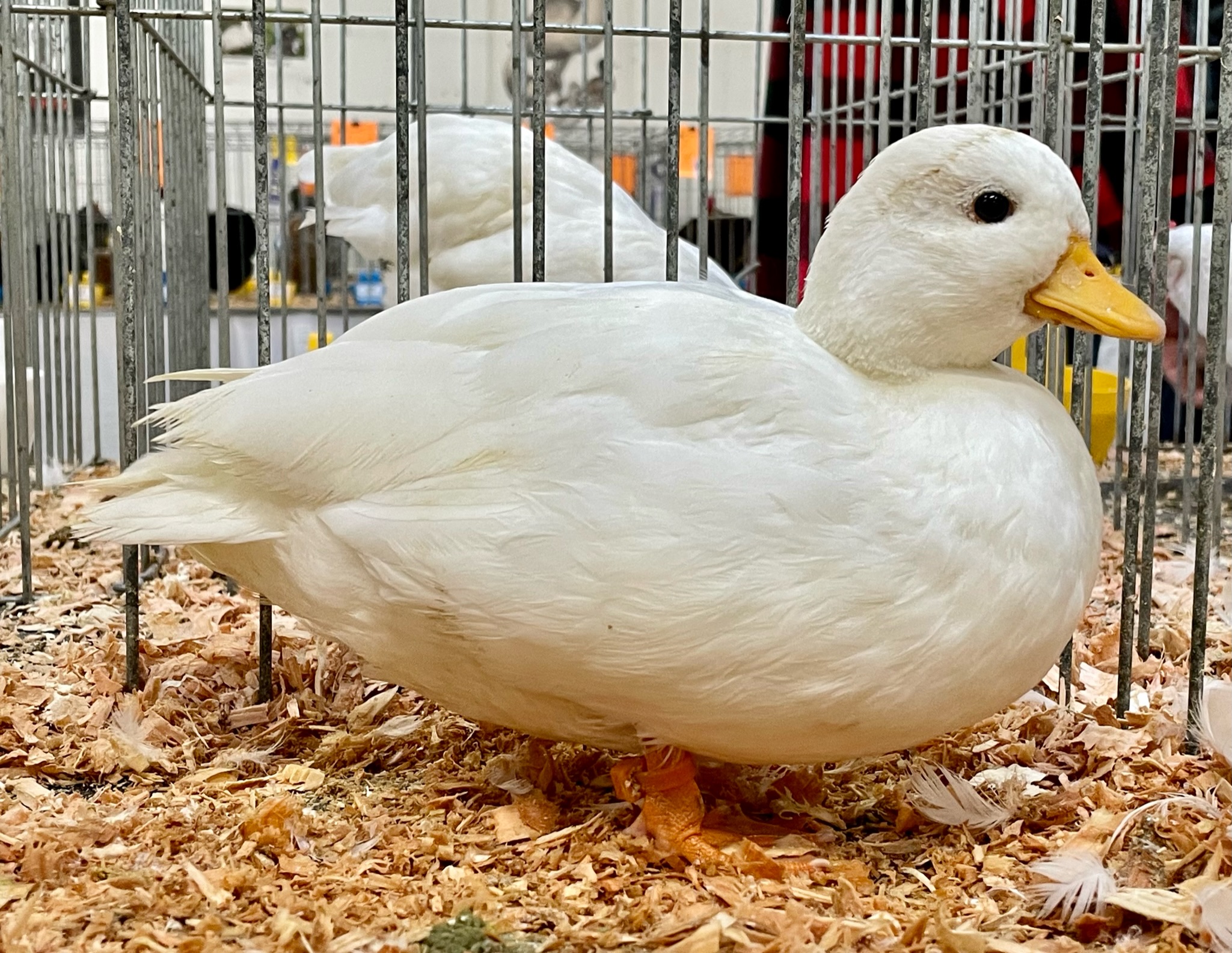This article on “perfecting” Call ducks is being republished from Acorn Hollow Bantams website with permission from Lou Horton.
After raising Calls from the early 1970’s until the early 2000’s, I left the breed for over a decade. I really missed their feisty personalities, their type which I find very appealing, and a couple of wonderful new color varieties which I found to be unique and intriguing.
Two years ago, I acquired some of my old strain of Gray Calls and began to establish a breeding flock. I also acquired birds from two other strains I admire with a purpose of putting together parallel matings.
There is no doubt that today’s Calls are stronger in type and smaller in size than they were when I left the breed. That is due to the diligent work of many breeders who are driven by competition which is as tough as there is in any other type of bantam. In a number of shows each year, the Call classes are not only the largest breed class but often the deepest in quality. But that emphasis on perfection has come at a price.
Here is what I have observed over the course of two years: there are clearly more breeding problems. By that I mean relatively poor egg production, more eggs without shells, more prolapsed penises among the males, and more winter losses due to the birds inability to sustain themselves in prolonged cold spells. Granted, my observations were limited to just one variety: the Grays. I suspect that similar observations may apply to the Whites at least, but that is conjecture on my part rather than observation.

My assumption is that such problems are primarily due to two factors: over emphasis on selection for small size and under emphasis on vigor when selecting breeding stock. The importance of vigor cannot be overstated, in my opinion. Vigor in the breeding stock promotes everything we should prize: productive breeders, good hatchability, and good overall health.
I would like to leave the reader with a few questions to ponder. Are judges insisting that the Call class winners be tiny or are the exhibitors showing smaller and smaller specimens? Have we reached a point where we are over doing shortness of bill in our Calls? Is color in the Grays being ignored to a substantial extent?
I believe that the ground we have lost can be regained within a few generations if the right breeding stock is propagated. The alternative is to breed birds which are more and more difficult to raise and reproduce, “perfecting” Call ducks into a dead end.
By Lou Horton
